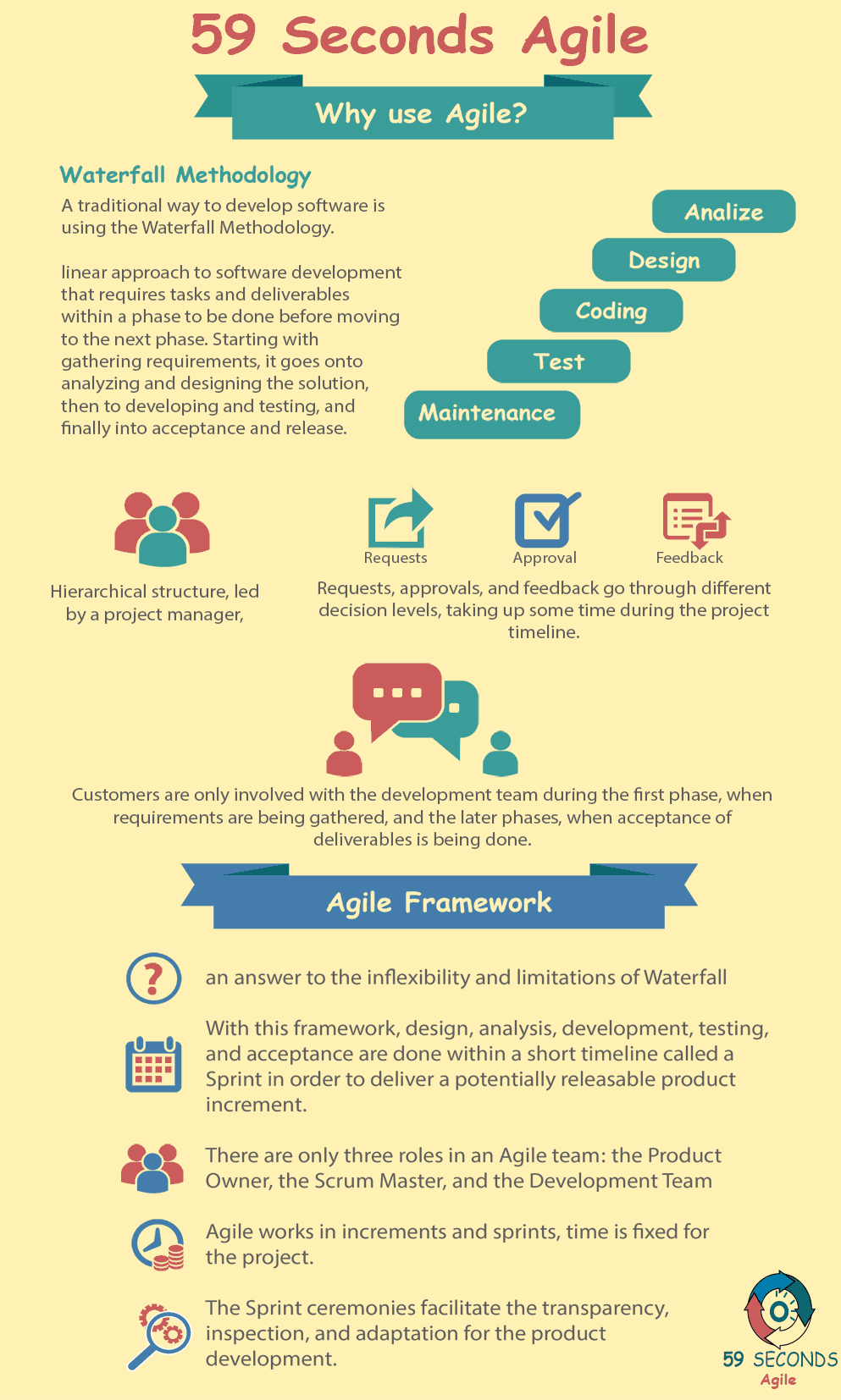
Why Use Agile As A Product Owner? – Part 2
Waterfall works for projects where requirements are stable and predictable, while Agile is best for developing new products. However, the 2015 CHAOS Report by the Standish Group has shown that Agile projects succeed three times more than Waterfall projects (39% versus 11%). Choosing Agile as the software development lifecycle model will be a statistically better bet.
Making Changes
Successfully implementing Agile will need the right tools, collaboration, and preparation. The Standish Group cites that management support contributes 15% to the success of projects (with another 15% contributed to user involvement). Executives need to be involved in transition efforts to Agile, as they are the sponsors of the program. Without their buy-in, there will be no resources for the right workspace and technology to facilitate collaboration and development. It is also the management that helps get the Agile coaching necessary for the organization to navigate through the transition.

Examining the trends and the business ecosystem that surround a project gives deeper insight into the best reasons and ways to develop a product. Doing so will also help manage threats and opportunities for the business to act on. One way to evaluate such would be doing the PESTLE analysis.
The PESTLE analysis is a framework used by businesses to analyze and monitor external factors around a project or the organization. Doing the PESTLE analysis involves capturing data categorized by the following factors:
● Political – Government policies, political stability, foreign trade policies, tax policies, and other policies affect how collaboration and businesses can be done within a region.
● Economic – Interest and exchange rates, stock markets, recessions, cost of living, and other economic factors have an impact on the extent to which an organization can be Agile.
● Social – Shared beliefs, demographics, social media, and workforce culture indicates how the organization is structured internally and how it interacts with businesses externally.
● Technological – Trends in goods, services, communications, and innovations influence what direction the organization will take in terms of operations and productization.
● Legal – Insurance, taxations, compliance legislation, and other legal policies regulate company activities and operations.
● Environment – Climate, ecology, sustainability, and material scarcity should be taken into consideration in planning around and implementing any activity in the organization.
Our Favourite Agile Books
We found these books great for finding out more information on Agile Scrum:
It is beneficial for business leaders and managers to keep track of these factors continuously in order to help keep the organization abreast of threats and opportunities. Having these data further support the decision making towards progress and innovation in the organization.
As a Product Owner, your focus should be getting your product out as soon as you’ve incepted and validated your idea. Unless you know exactly what you need to do, sticking to a traditional approaches like Waterfall will prevent your product from improving and adapting to the market. Using Agile practices and being equipped with information on the business ecosystem will help you find your way out of development rut and up the competitive ladder.

